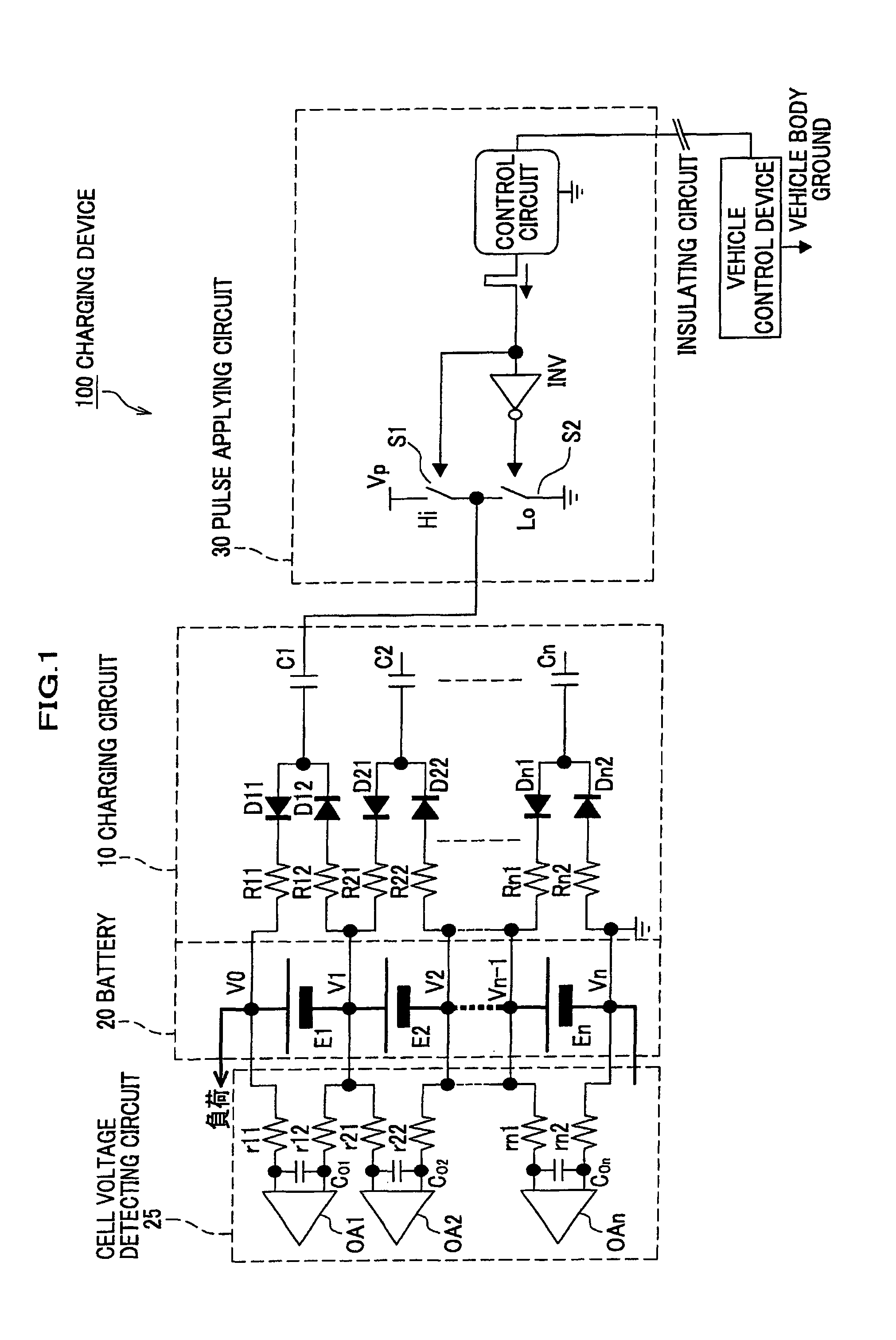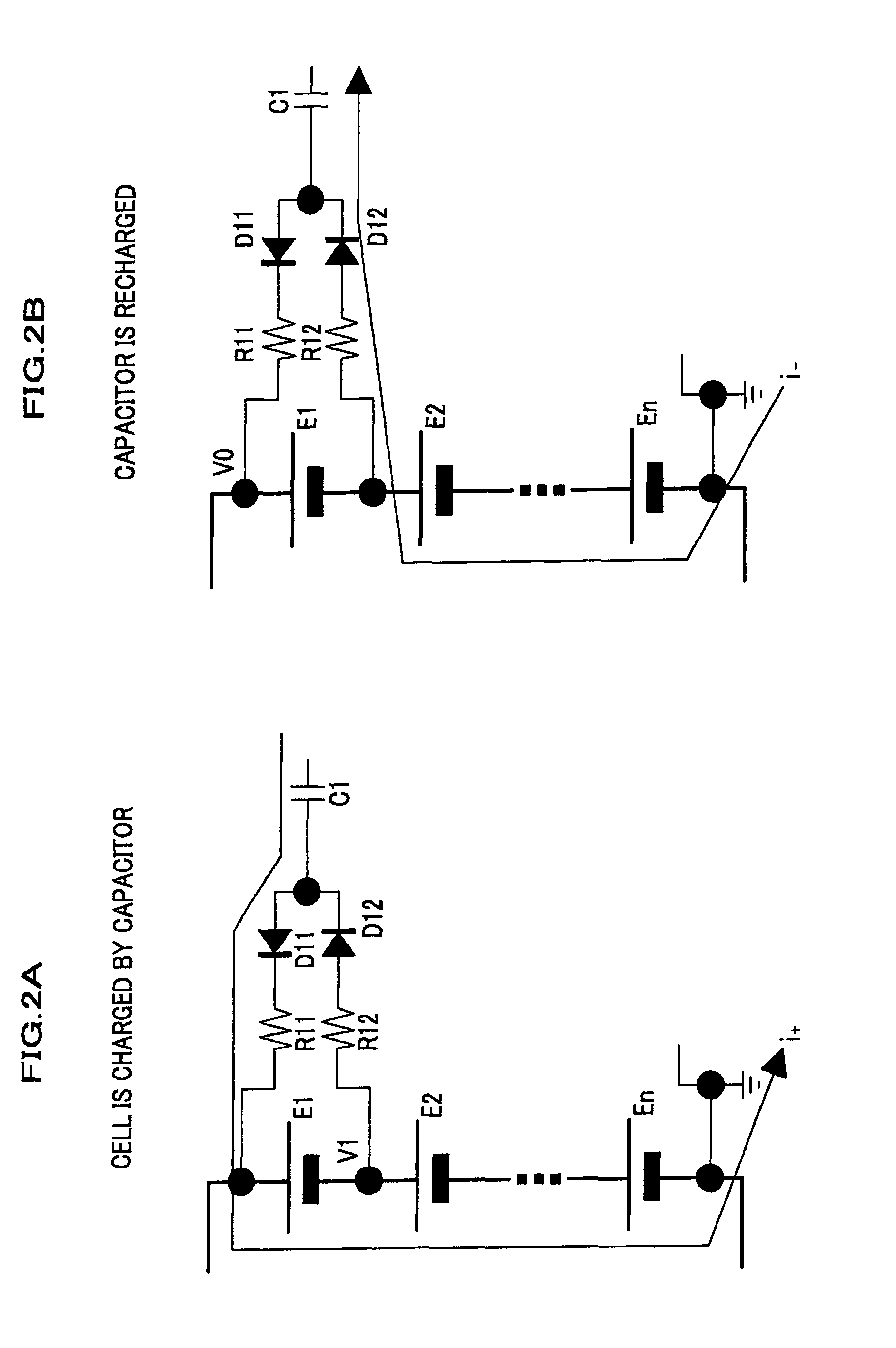Charging device
a charging device and charging circuit technology, applied in the direction of electric power transfer ac network, parallel operation of dc source, transportation and packaging, etc., can solve the problems of fine short circuit, difficult integration and miniaturization, and reduced usable charging capacity of series-connected battery cells, so as to reduce the effect of common mode noise generated between electric accumulator cells and rectangular wave power sources and the reduction of transient curren
- Summary
- Abstract
- Description
- Claims
- Application Information
AI Technical Summary
Benefits of technology
Problems solved by technology
Method used
Image
Examples
first embodiment
[0036]A charging device according to a first embodiment of the present invention will be described below with reference to the attached drawings.
[0037]A charging device 100 shown in FIG. 1 includes a battery 20 formed by connecting n battery cells (electric accumulator cells) E1, E2, . . . , En in series, a charging circuit 10 for charging each of the battery cells (electric accumulator cells) E1, E2, . . . , En, a pulse applying circuit 30 which is a periodical power source (a rectangular wave power source) for generating a rectangular wave to drive the charging circuit 10, and a cell voltage detecting circuit 25 for measuring the voltage of each of the battery cells (the electric accumulator cells) E1, E2, . . . , En. Incidentally, the battery 20 is connected to a load. Further, the pulse applying circuit 30 is connected through an insulating circuit, to a vehicle control device which is grounded to a vehicle body. A reference potential of the battery 20, the charging circuit 10 a...
second embodiment
[0050]According to the first embodiment, in order to charge the battery cell E1, the other battery cells E2, E3, . . . , En are charged and discharged. However, there is also a configuration in which only the battery cell E1 is charged according to a second embodiment of the present invention. A charging device according to the second embodiment will be described below with reference to FIG. 5.
[0051]A charging device 150 includes the cell voltage detecting circuit 25, the battery 20, a charging circuit 15, and a pulse applying circuit 35. The cell voltage detecting circuit 25 and the battery 20 will not be described since they have the same configuration as that of the first embodiment. Only the charging circuit 15 and the pulse applying circuit 35 will be described below. Incidentally, similar to the first embodiment, the pulse applying circuit 35 is connected to the negative electrode, which serves as the reference potential, of battery cell En.
[0052]The charging circuit 15 charge...
PUM
 Login to View More
Login to View More Abstract
Description
Claims
Application Information
 Login to View More
Login to View More - R&D
- Intellectual Property
- Life Sciences
- Materials
- Tech Scout
- Unparalleled Data Quality
- Higher Quality Content
- 60% Fewer Hallucinations
Browse by: Latest US Patents, China's latest patents, Technical Efficacy Thesaurus, Application Domain, Technology Topic, Popular Technical Reports.
© 2025 PatSnap. All rights reserved.Legal|Privacy policy|Modern Slavery Act Transparency Statement|Sitemap|About US| Contact US: help@patsnap.com



